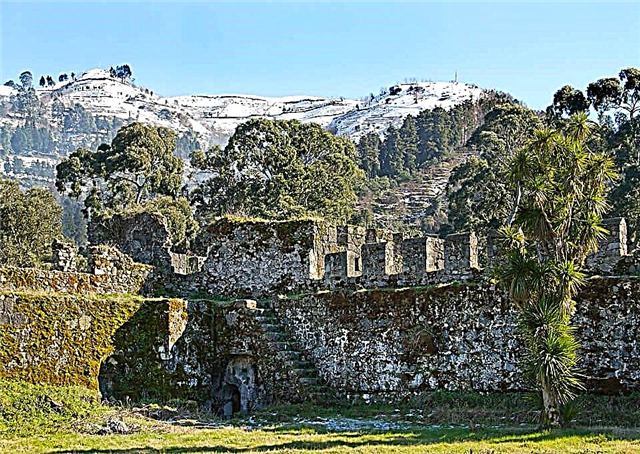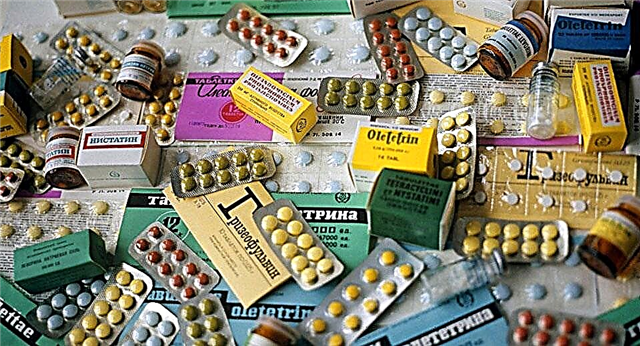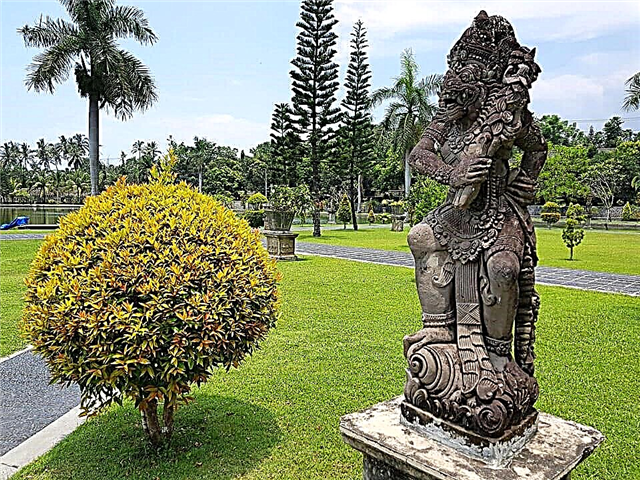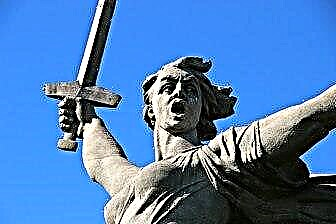Volgograd is famous for the grandiose figure "The Motherland Calls!" on the Mamayev Kurgan and complexes of monuments dedicated to episodes of the Great Patriotic War. It is a hero city that bravely took on the powerful attack of the German invaders and was almost destroyed to the ground. The victory in the Battle of Stalingrad was of key importance for the USSR, as it turned the entire course of the campaign at the cost of countless lives of brave soldiers.
Many war memorials remind residents and tourists of those difficult times: the Panorama Museum "Battle of Stalingrad", Alley of Heroes, Pavlov's House, Gergardt's Mill will tell about the events of the terrible war. The city seems to be imbued with the spirit of heroism, which soars in museums, on the streets and squares.

The best hotels and hotels at affordable prices.
from 500 rubles / day
What to see and where to go in Volgograd?
The most interesting and beautiful places for walking. Photos and a short description.
Mamaev Kurgan and sculpture "Motherland Calls!"
The monumental sculpture of a woman with a sword in her hands on the Mamayev Kurgan is the central composition of the memorial complex "To the Heroes of the Battle of Stalingrad". It was created in 1967 according to the project of E.V. Vutechich. The total height of the monument is 85 meters. It was installed 200 meters from the legendary 102nd height, over which fierce battles were fought for 140 days during the Battle of Stalingrad.

Museum-panorama "Battle of Stalingrad"
The museum complex, opened in 1985 and consisting of two levels. The first one houses the exposition itself and the storage of funds. On the second - a panoramic canvas "The defeat of the Nazi troops at Stalingrad." Some of the exhibits are located in the open air: military equipment, several monuments and a tank tower. About half a million people come to the museum annually.

Gerhardt's mill
A steam mill from the beginning of the 20th century, which was destroyed during the Battle of Stalingrad. The building was not rebuilt in memory of the terrible events of the war. Its ruins are part of the Stalingrad Battle Museum-Reserve. In the first years after the end of the fighting, some of the mill's premises were used as living quarters, which can be clearly seen from the sealed windows in old photographs.

Central embankment
The city embankment is considered one of the best on the Volga. It consists of two levels: the first one is directly adjacent to the river, the second one runs near residential buildings. The place acquired its modern look in the 1950s. Before the war, the embankment was used to receive cargo ships; there was also a passenger river station here. Today it is a decoration of Volgograd and the main gate to the city.

Square of the Fallen Fighters
The central city square, where merchants' shops and taverns were located before the Revolution of 1917. During the Battle of Stalingrad, it became the site of bloody battles. In honor of the fallen soldiers, to honor their courage and heroism, in 1963 the Eternal Flame was lit here. There are two mass graves in the square. Today it is surrounded by monuments, administrative buildings, hotels and residential buildings.

The Heroes Alley
One of the central boulevards of Volgograd, consisting of three parallel streets. It originates from the Volga embankment. The commemorative alley began to be laid after the war, during the restoration of the city from ruins. It was decided to dedicate it to the defenders of the Motherland, who died heroically in the battles. Along the boulevard there are steles with the names of 127 fighters stamped on them, who defended Stalingrad to their last breath.

Pavlov's House
Residential building on pl. Lenin, famous for the fact that during the Battle of Stalingrad a group of fighters held the defense for 58 days, hiding within its walls. The soldiers were led by senior sergeant Ya. F. Pavlov, hence the modern name of the building. For Soviet people, the house has become a symbol of resilience, incredible courage and heroism that people can only display in defending their homeland.

Museum of Fine Arts. I. Mashkova
The exposition opened to visitors in 1963. Today it is the only art gallery in Volgograd. The collection is a collection of works from the 19th – 20th centuries. It is based on exhibits donated from the State Hermitage, the State Historical Museum and the Tretyakov Gallery. A separate section of the museum is dedicated to the works of Volgograd painters.

Memorial History Museum
The collection is housed in a 1903 mansion that once belonged to the Repnikov merchant family. The building itself is a valuable architectural monument of the early 20th century, erected in the new Russian style from bright red bricks. The exposition consists of six sections, which show paintings, graphics, photography, documents and other items from the period of the Civil and Great Patriotic War.

Museum-reserve "Old Sarepta"
An open-air museum covering an area of 5 hectares. It was organized with the aim of preserving the architectural heritage of the 18th – 19th centuries, as well as reviving the traditions of the peoples of the Volgograd region. Russian, Tatar, German, Kalmyk, Ukrainian and Belarusian national centers operate in Staraya Sarepta. The museum collection consists of ethnographic, archaeological and artistic exhibits.

Volgograd Planetarium
The planetarium was opened in 1954; today it is the only space theater in the region and nearby regions. It was erected by engineers and builders from the GDR as a gift from the USSR in honor of the upcoming 70th birthday of I. Stalin. The architecture of the building resembles the outline of a neoclassical monumental temple with massive frontal columns and a high dome.

The building of the Tsaritsyn fire brigade
Regional architectural monument of the XIX century, which served as a fire tower. The historical building was erected in 1897, but it was destroyed in the 1930s (according to another version, during the Battle of Stalingrad). The modern building appeared in 1995, it was recreated in accordance with its original appearance. Currently, the former fire tower houses the administrative authorities.

Kazan Cathedral
The temple was erected at the end of the 19th century in honor of the icon of the Kazan Mother of God. Earlier on this place there was a church of the beginning of the XVIII century, later - a wooden chapel. The building was built in the eclectic style, combining the architectural manners of different eras. Perhaps that is why it looks so festive and elegant. The cathedral was reconstructed after many years of desolation during the Soviet period.

Church of All Saints on Mamayev Kurgan
The temple received its first parishioners in 2005, but the site for its construction was consecrated back in 1993 by Patriarch Alexy II. The building was erected not far from the mass grave on the Mamayev Kurgan, and this gesture had a rather deep meaning. Today, its golden domes shining in the sun seem to complement the memorial composition dedicated to the heroes of the Great Patriotic War.

Fountain "Art"
The composition adorns the central city embankment. Residents of the city also know it under the name of the "Friendship of Peoples" fountain. The sculpture is a group of three girls in national costumes performing some kind of folk dance. The figures are fixed on a high pedestal, around which jets of water beat. This place is in demand during social events and festivals.

Fountain "Barmaley"
The historic Barmaley once adorned the center of Soviet Stalingrad. It was first created in 1930.In memory of that fountain, two copies of it were installed in 2013. One is near the Gergardt mill, the second is on the square near the station. The composition consists of figures of dancing children who dance around a huge crocodile. The sculptural group was created based on K. Chukovsky's fairy tale "Barmaley".

Monument to Panikakha
The sculpture is dedicated to Mikhail Panikha, the hero of the Great Patriotic War. During the defense of the 102nd height, he rushed with a Molotov cocktail on one of the German tanks and blew it up, thereby preventing the enemy from gaining a foothold on the Mamayev Kurgan. The monument is made in the form of a 6-meter figure, frozen in a decisive pose and ready to jump off the spot at any moment. This is how the sculptors saw the hero during his fatal throw.

Lenin monument
At the very entrance to the Volga-Don Canal there is a 27-meter monument to Lenin on a 30-meter granite pedestal. It was made using the same technology as Motherland Calls! The monument was built in 1973; earlier in its place there was a monument to I. Stalin, which was dismantled in 1969. Today the monument is a cultural heritage site of the Russian Federation.

Volgograd elevator
An unremarkable industrial building built in 1940 is today an important historical monument due to the role it played during the Battle of Stalingrad. In 1942 and 1943, fierce battles were fought over the facility, as a result of which the structure was badly damaged. In 1977, a memorial sculpture to the defenders of the city was erected here.

Railway station building
The station on the Volga branch of the railway, which is considered an architectural monument. The modern building was erected in 1954 to replace the old brick structure of the late 19th century, completely destroyed during the Battle of Stalingrad. The station was built in the classical style of the Stalinist era with its inherent solemnity and monumentality. For decoration, marble and granite were generously used.

Metrotram
City system of high-speed trams with metro elements, consisting of 22 stations. The total length of the line is over 17 km. Its history began with the opening of a tram depot in 1971. According to some Western magazines, the Metro is one of the most interesting tram routes in the world due to the fact that many of its sections are laid through underground tunnels.

River Station
Volgograd River Station is considered the largest not only in Russia, but throughout Europe. It was built in the second half of the 20th century. Its pier is designed for 6 ships; inside there is a spacious concert hall for 1000 spectators. From here you can go for a pleasant walk along the Volga on a comfortable motor ship. Today the station is more of an entertainment center than a full-fledged transport hub.

Volga-Don Canal
The canal connects two large waterways of the European part of Russia - the Volga and Don, it stretches for 101 km in length. German prisoners of war, prisoners, demobilized soldiers and civilian university students took part in the construction - in total, about a million people were employed in the work. Perhaps that is why the channel was dug in a record time of 4.5 years.

Volzhskaya HPP
The largest hydroelectric power plant in European Russia. It was erected in 1961 as part of the Volga-Kama cascade. The activities of the enterprise benefit people, but harm the environment, as it makes it difficult for the spawning of beluga, sturgeon and other river breeds. The grandiose structure can only be admired from the shore, since passage and filming on the territory of the hydroelectric power station is prohibited.

Volga river
The largest waterway in Europe (and one of the largest in the entire planet), stretching for 3.5 thousand km. from the Tver region to the Caspian Sea. On its banks there are numerous cities, including those with a population of over one million. The coastal landscapes of the Volga are sung in many works of Russian classics and are depicted on the canvases of artists, since people have long admired the greatness and power of this river.












